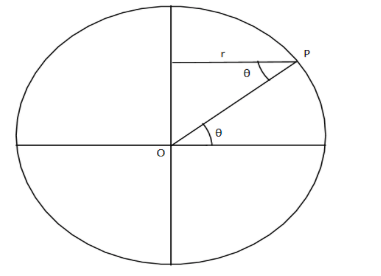Question
Question: Find out the correct relation for the dependence of change in acceleration due to gravity on the ang...
Find out the correct relation for the dependence of change in acceleration due to gravity on the angle at latitude due to rotation of Earth.
A. dg α cosθ
B. dg α cos2θ
C. dg α cos23θ
D. dg α cosθ1
Solution
The two forces that act on the Earth are the force due to gravity and the centrifugal force. Centrifugal force depends on the angle of latitude. So the resultant force changes with the angle of latitude. The resultant acceleration due to these forces is termed as the effective acceleration due to gravity. Derive the relation between effective gravity and angle of latitude by balancing the force to find the dependence of gravity on the angle of latitude.
Complete step by step solution:
On any point on the earth there acts the two forces which are force due to gravity and the centrifugal force due to the rotation of earth. This centrifugal force acts outwards hence decreasing the resultant force.
Let us consider Earth as a sphere of mass M and radiusR. Take an object of mass mat the point P at a latitude with the angleθ. As the earth is rotating the object experiences the centrifugal force along with the force of gravity.

The object is moving in the circular path if radius r
The relation between r and the radius of earth R is given as
r=Rcosθ
So the centrifugal force Fc=mω2r=mω2Rcosθ
Let us represent the resultant acceleration as g′ or in other words the effective acceleration due to gravity.
Since the force is vector we will use the vector addition here, we get
R2=A2+B2+2ABcosϕ
(mg′)2=(mg)2+(mω2Rcosθ)2+2mg.mω2Rcosθcos(180−θ)
m2(g′)2=m2(g)2+m2ω4R2cos2θ+2m2gω2Rcos2θ
(g′)2=(g)2(1+g2ω4R2cos2θ−g2ω2Rcos2θ)
For earth the value of angular velocity ω is 7.29×10−5 so we will neglect the terms containing ω4
So we have
(g′)2=(g)2(1−g2ω2Rcos2θ)
(g′)=(g)(1−g2ω2Rcos2θ)21
Using the binomial expansion and neglecting the higher power terms we get that
(g′)=(g)(1−21.g2ω2Rcos2θ)
g′=g−ω2Rcos2θ
g−g′=ω2Rcos2θ
For small angle θ g−g′=dg
So dg=ω2Rcos2θ
dgαcos2θ
Option B is correct.
Note: The main key in the question is considering the centrifugal force along with force due to gravity and vector addition of force. Take care while taking the components.
